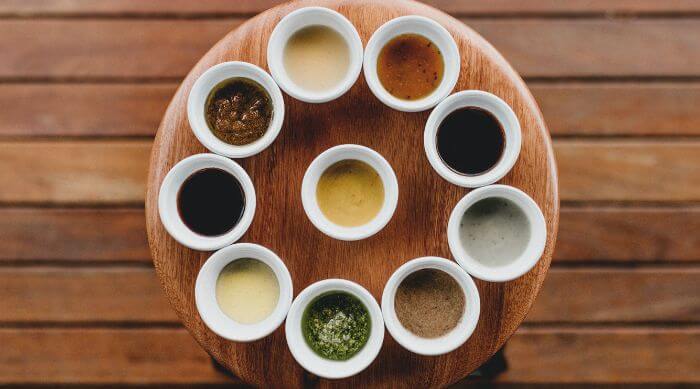Information surrounding drinking alcohol can be confusing. You may have read that wine is good for heart health, but that drinking several nights a week can increase your cancer risk. The mixed signals seem endless.
Is alcohol bad for you? If not, how much alcohol is safe? We’ll demystify the topic so you can feel confident in knowing how alcohol affects your health. Let’s look at the actual science and statistics behind these questions.
Table of Contents
Is there a safe amount of alcohol to drink?
Who should not drink any alcohol?
Benefits to Drinking Alcohol
Yes, there can be some benefits to drinking alcohol.
However, the importance of drinking in moderation and for short-terms cannot be overstated. Chronic heavy drinking or binge drinking would undo any of these benefits and can cause severe problems.
Here are the top benefits of drinking alcohol in moderation:
- A healthier heart. Studies show that light to moderate drinking may reduce the risk of cardiovascular disease between 25-40% and lower the risk of heart attack, in part thanks to the antioxidant resveratrol that is found in some wines.
- Lower risk of ischemic strokes. The likelihood of an ischemic stroke, caused by blood clots, may be reduced by light to moderate drinking in older patients.
- Reduced diabetes risk. Research points to a link between minimal alcohol consumption and a decreased chance of developing type 2 diabetes.
- Raised HDL levels. High-density lipoprotein, or “good” cholesterol, is raised after moderate amounts of alcohol.
Of course, drinking comes with risks. The dietary guidelines put out by the U.S. Department of Agriculture do not recommend starting drinking for any reason.
Downsides to Drinking Alcohol
However, many drinkers partake in more than light to moderate drinking. The effects of alcohol can trigger a whole host of concerns and even chronic medical conditions such as several types of cancer.
What are the dangers that come with drinking alcohol? The dangers that come with drinking alcohol include:
- Dehydration
- Hangovers
- Additional costs and less money
- Inflammation
- Digestive issues
- Acid reflux
- Weight gain
- High blood pressure
- Raised risk of breast cancer, liver cancer, and cancer in the esophagus and mouth
- Increased risk of heart disease
- Heightened risk of kidney and liver disease
- Altered mental health
- Risk of substance abuse and alcohol dependence
- Weakened immune system
- Increased risk of skin diseases
- Cognitive decline
- Fatigue
- Nutritional deficiencies
- Muscle cramping
- Increased anxiety and overall impairment of well-being
- Possibility of pancreatitis
- Issues with the endocrine system
- Cirrhosis of the liver
- Headaches
When you stop drinking, you’ll notice some of these symptoms fading. It’s particularly common to experience some weight loss when you eliminate large amounts of alcohol intake.
Is there a safe amount of alcohol to drink?
When it comes to your health care, your drinking patterns can be the difference between mild health benefits and major downsides, including serious health problems.
The alcohol facts may shock you. Excessive drinking is a public health issue, causing almost 100,000 deaths each year in the US alone.
“Low-risk drinking” is drinking that puts you at a lessened likelihood of developing alcohol use disorder and any health issues that accompany drinking too much.
The healthiest way to drink alcohol is in moderation. The Centers for Disease Control and Prevention (CDC) define drinking in moderation as:
- No more than 2 drinks in a day for men or 1 for women
- No more than 14 alcoholic drinks per week for men, and no more than 7 for women
For reference, according to the National Institute on Alcohol Abuse and Alcoholism (NIAAA), a standard alcoholic drink in the US contains 14 grams of pure alcohol.
But for those of us who don’t keep a pocket guide tracking the grams of alcohol in our favorite drinks, a “standard drink” depends on the type of alcohol you’re drinking and typically translates to one shot of liquor or just 5 ounces of wine.
There’s also the sobering statistic from the NIH that 2 out of 3 adult drinkers in the U.S. report drinking more than a moderate amount at least once a month. This means drinking in moderation may be more difficult and less common than is publically recognized.
Is it bad to drink alcohol every day? It can be bad to drink alcohol every day if you aren’t drinking in moderation. When possible, take multiple days off between the days that you drink, in order to allow your body to recover. This reduces your risk of developing alcohol use disorder.
Excessive Drinking
When it comes to drinking too much, overconsumption can be categorized as one of the following types of excessive alcohol use:
- Heavy drinking — more than 8 drinks a week for a woman or more than 15 for a man
- Binge drinking — 4 or more drinks on a single occasion for a woman, or 5 or more drinks for a man
Both categories of excessive alcohol consumption put drinkers at risk of developing alcohol use disorder, health conditions, and even death.
Drinking in these patterns can also raise your blood alcohol concentration, or BAC, above the legal limit of 0.08%, impairing judgment and increasing the odds of fatal accidents (though you should never drink and drive, even in moderation).
Who should not drink any alcohol?
While there are ways to lower the risks of drinking, there are some groups that should not drink at all for their personal health:
- Individuals in recovery from alcohol use disorder or those who have concerns about their use becoming problematic
- Pregnant women
- People under 21, the legal drinking age, as alcohol can affect development and it is against the law
- Patients on certain medications that interact with alcohol, like painkillers, sedatives, and mood stabilizers. Talk to your doctor about alcohol and your medication
- Anyone who is allergic to it’s ingredients
What are signs you are drinking too much alcohol? Some signs you are drinking too much alcohol include: needing to drink daily, shaking the day after drinking, feeling a compulsion to drink, being unable to stop drinking once you’ve started, and an increased tolerance to alcohol,
Is drinking alcohol a sin?
While the Department of Health and HUman Services doesn’t address this aspect of alcohol consumption, drinking is considered a sin in Buddhism, Hinduism, and Islam. In other religions, the answer is a little less clear. For example, wine is celebrated as a gift from God in the Christian Bible, but the act of overindulgence leading to intoxication is considered sinful. mm
Alcohol In Different Types Of Drinks
Alcohol is measured in a standardized way across alcoholic beverages from moonshine to Manhattans. ABV, or alcohol by volume, indicates how much of the drink is alcohol.
The higher the ABV, the higher the alcoholic content and the drink’s effects on the body.
There’s another factor at play: pour size. A “standard drink” is designed to limit the effects of drinks with a higher alcohol content. For example, wine has a higher ABV than beer, so a standard glass of wine is 5 oz, while a standard glass of beer is about 12 oz.
You may also want to try having a glass of water between alcoholic beverages, or alternating with a non-alcoholic wineor other NA drink.
- Wine: A 5-ounce glass of wine contains between 11-13% alcohol. Fortified wines, however, can run up to 25% ABV due to the added spirits.
- Beer: Most beers typically around 5% ABV. However, some high-gravity beers can run as high as 6-12% ABV and should be poured into smaller glasses.
- Ciders: Ciders are similar to beer in both alcohol and serving size, with an ABV ranging from 4.5-7% on average. They also come in a 12-ounce can or bottle in most cases.
- Mead: Mead is an ancient drink made from fermented honey. It ranges from 6-20% ABV, which may be why it’s popular with Norse gods. Like wine, it should be served in 5 oz pours.
- Liquor: Liquors and spirits are often 40% ABV (also called 80 proof) or higher. When diluted with mixers in a cocktail, the ABV of the cocktail varies significantly.
To avoid the negative effects of drinking like impaired judgment, unpleasant hangovers, and health risks, choose to drink in moderation, space out your drinks, and consume no more than 1 or 2 drinks per day.
5 Best Alcohol Alternatives
If you’re looking to stop drinking, the best way to change a habit is to replace it. That’s why it’s essential to find something else you’ll enjoy to replace your drinking habit.
Here are some delicious alternatives to drinking alcohol:
- Alcohol-removed wine. Surely’s non-alcoholic sparkling rose and white are both crafted by expert winemakers in California to maintain impeccable flavor even after removing the alcohol content.
- Mocktails. Making a delicious drink with a beautiful garnish can be just as satisfying as a tasty drink. Our roundup of the best mocktail recipes is the best place to start. Many places are starting to offer their own mocktail list for the “sober curious”.
- A hot or cold-brewed tea. These can be a fun alternative if you like something tasty to sip before bed. If you want to add an extra kick, try some CBD oil or adaptogens.
- Kombucha. This sparkling fermented tea is packed with probiotics and comes in a variety of flavors.
- Non-alcoholic beer. There are numerous alcohol-removed beers on the market for those who love a cold brew on a warm night.
Keep great taste, lose the booze.
If you want to cut down on your alcohol use, or consider yourself sober curious, you may need an alternative to reduce or replace your drinking.
Here at Surely, we love everything about wine except the alcohol. That’s why we’ve crafted our dealcoholized sparkling rose and sparkling white wine to give you that impressive California wine country flavor, but without the health risk factors. We hope you enjoy it as much as we do.
Sources
- Alcohol’s effects on the cardiovascular system.
- Alcohol consumption and risk of ischemic stroke: the Framingham Study.
- Alcohol and type 2 diabetes. A review.
- Alcohol consumption and high density lipoprotein cholesterol concentration among alcoholics.
- Innate immunity and alcohol.
- Skin diseases in alcoholics.
- Alcohol control efforts in comprehensive cancer control plans and alcohol use among adults in the USA.






